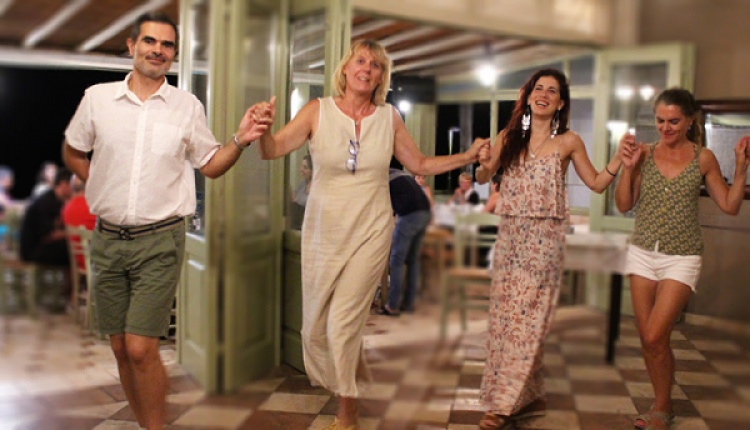Dancing The Kalamatianos!
- by XpatAthens
- Monday, 23 November 2020

Greeks Definitely Love Dancing!
Greek dances are very important in Greek culture and there is an amazing variety. The music, the pace, the steps can vary depending on the area in Greece. However, there are some dances that are danced all over Greece and almost every Greek knows to dance. This is, because they usually also learn some dances during their gymnastic lesson in primary school, and Kalamatianos is one of them.
The Origin
The Kalamatianos is a popular dance, often referred to as ”sirtos”. Its roots are lost back in antiquity: on ancient vases, we can see dancers dancing like in the Kalamatianos, and there are ancient inscriptions referring to the “sirtos” dances.
The name “Kalamatianos” indicates its modern origin from the Peloponnese (Kalamata: city in south Peloponnese). Thanks to the cheerful music and its pleasant rhythm, the dance was introduced throughout Greece with several variations.
The Steps
This dance is danced by both men and women. The dancers dance in a circle. The first person in the row can improvise and make figures. He/she often holds a white scarf in his/her right hand.
The dance has 12 steps. Depending on the area there are small variations, e.g. the way you cross your legs. The steps may seem to be a lot, but the most important thing is to keep up with the rhythm of the music. Even if you do not know the steps, do not hesitate to enter the circle and follow the rhythm of the other dances. Do not worry if it goes wrong, the goal is to have a good time!
The Music
The music that accompanies the Kalamatianos is usually cheerful and the pace varies depending on the area. So sometimes the rhythm of the music is very fast and therefore the circle moves quickly, and in other areas, the music has a much slower pace, and you will have more time to adjust your steps and learn it more easily! Click here for an example of foreigners dancing the Kalamatianos in Greece.
The most representative song is the ” Mantili Kalamatiano” (=scarf made in Kalamata), where the singer asks her beloved to bring her a silk scarf as a sign of his love on his way back from Kalamata (Kalamata was known for producing silk scarves of high quality). Listen to the song, here.
The Village Feasts – Πανηγύρια
During summer, feasts with live music are organized in many villages, accompanied with food, drinks and many hours of dance. If you are lucky, and you are on the right place, the right moment, do not hesitate to join the circle, trying your dancing steps. If you prefer to
just “observe”, that is also a great experience. Click here to see one of my experiences on the island of Skiros, where I joined the circle together with our daughter.
If you also love Greek music and dance, then feel free to download my free eBook, on the masaresi.com webpage!
This content was originally posted on masaresi.com

About MASARESI
Masaresi.com was founded by Maya Cornelissens-Andreadi, who shares her experience about how “to integrate in Greece and feel like a local”. Masaresi = μας αρέσει = we like it! Discover the “real Greece," while delving into all the aspects of Greek life – from modern lifestyle and culture to history, literature, traditions, and many more.
Explore Greece - Read About Greece - Buy Greek - Learn Greek


